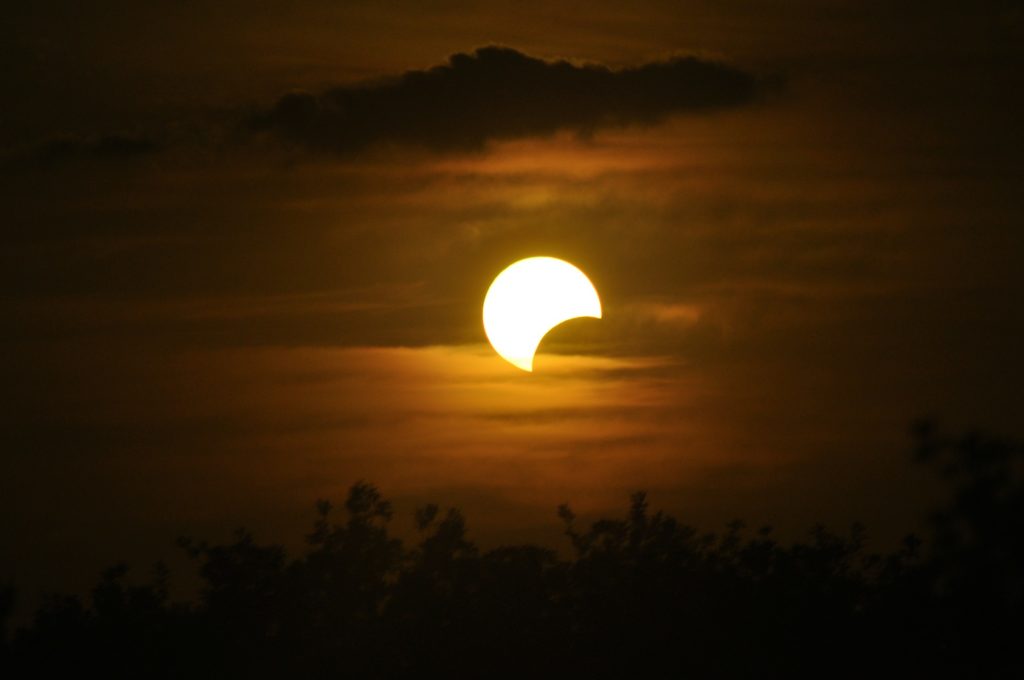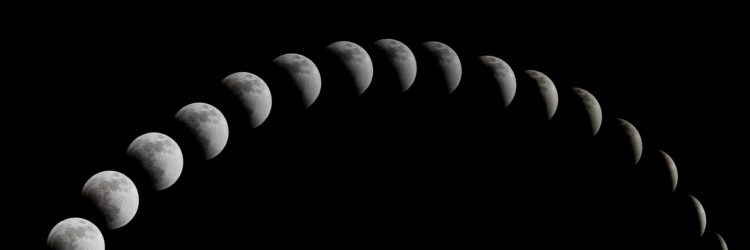The U.S. has not seen a total solar eclipse since 1991, and Hawaii was the only state that witnessed it. In 2017, on August 21, a dramatic total solar eclipse, the first the mainland has seen since 1979, will cast its shadow in a 3000-mile arc sweeping from the Pacific Northwest through the U.S. heartland to coastal South Carolina.
A total solar eclipse is a natural spectacle like no other. Millions will travel from everywhere to witness firsthand the eerie moments of the eclipse’s totality, when the Moon obliterates the Sun. This casts a cylindrical shadow on the earth, a corridor of silvery semidarkness 70 miles wide, called the “path of totality.” This path will travel eastward at about 1100 miles per hour.
The entire U.S. will experience a solar eclipse, but outside of that 70-mile-wide band the eclipse will appear partial rather than total.
Where You Can See It
This event is already being called “The Great American Eclipse” or “The All-American Eclipse” because its path of totality crosses the United States and no other nation. Festivities have been planned, and hotels and campgrounds are filling up, in the cities and towns in the shadow’s corridor:
- Corvallis, Albany, and Salem, Oregon
- Idaho Falls, Idaho
- Jackson Hole, Grand Teton National Park, and Casper, Wyoming
- Grand Island, and Lincoln, Nebraska
- Joseph, Columbia, Jefferson City, and Cape Girardeau, Missouri
- Carbondale, and Marion, Illinois
- Paducah, and Bowling Green, Kentucky
- Clarksville, Nashville, and Murfreesboro, Tennessee.
- Augusta, Georgia
- Greenville, Columbia, and Charleston, South Carolina
Nashville, Tennessee, is the only major city in the path of totality. Kansas City, St. Louis, Knoxville, and Chattanooga miss totality by a whisper. Totality will last the longest at Carbondale, Illinois: there, the eerie twilight will last about 2 minutes and 25 seconds.

What This Eclipse Means
This eclipse, an exact alignment of the Moon and Sun, is 2017’s main astrological and astronomical event. It begins on the West Coast around 10 a.m., and occurs at 28 degrees and 53 seconds (almost 29 degrees) of the zodiac sign Leo.
Astrologically, conjunction of the Moon and Sun means the inner self and the outer self are aligned or one. In the birth horoscope of the United States (July 4, 1776, 5:10 p.m.) this eclipse opposes the nation’s Moon placement at 27 degrees of Aquarius. An event that strongly expresses the will and pride of the American public is likely to happen at the time of the eclipse or one month afterward.
Solar eclipses have frightened people and animals for millennia. Animals panic and birds think it’s time to roost. Humans believed a sky monster or evil force had snuffed out the Sun, or that daylight suddenly faded into night because they’d angered the gods.
Around 2500 B.C., Chinese astrologers realized eclipses were simply alignments of the Earth, Moon, and Sun, and were able to predict them; about the year 1000 B.C., Middle Eastern astrologers and mathematicians got the knack of doing the same. When solar eclipses became predictable there was no longer any reason for panic or fear. The Chinese believed eclipses brought favorable events. Western astrologers today say that for individuals, both solar and lunar eclipses can bring surprises and adjustments, depending on their positions in an individual’s chart.
The last comparable eclipse, its shadow unrolling through America’s heartland, occurred on June 8, 1918. Because there was no color photography then, an artist-physicist was hired to observe the totality and paint it in the colors he had seen. U.S. residents might remember observing solar eclipses in 1991 and 1994, but these were only partially visible from the U.S. mainland.
During the present century 68 total solar eclipses will occur, each casting its shadow somewhere on the globe. The next total solar eclipse visible from the U.S. will be on April 8, 2024, and Carbondale, Illinois, is once again that eclipse’s focal point. Astrologers and astronomers are definitely in alignment on this fact! Southern Illinois University at Carbondale is currently preparing its football stadium for crowds of outdoor and indoor eclipse watchers (all hoping that August 21, 2017 is a cloudless day) and festivities, including tailgate parties.
Astrologically, partial and total eclipses are planetary conjunctions, which are positive. Eclipses are harmless to humans unless they look directly at the solar disk. The damage that solar radiation does to the human retina is painless but can result in blindness. Cheap or free ways to view the eclipse from anywhere in the world include online viewing, television, or with your back to the sun using a “pinhole camera” made of two pieces of cardboard, one of them pierced with a pin. Two filing cards will do. Around the Moon’s occultation, you will be able to see the rare sight of the Sun’s flaming corona.
Mark your calendars for August 21, 2017.
